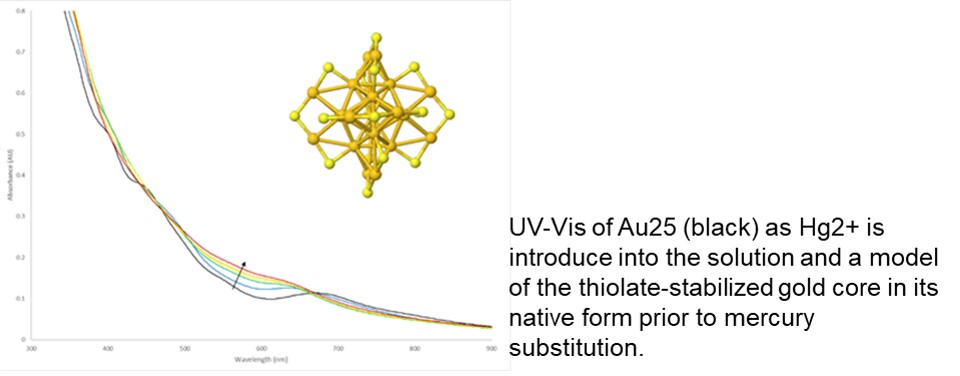Bridges to Doctorate Program
Research
Fifth UC Davis Cohort

(Photo coming soon)
Raul Centeno
Mentor: Dr. Krish Krishnan

(Photo coming soon)
Paola Aguilera
Mentor: Dr. Morgan Hawker

(Photo coming soon)
Jorge Aguilar-Cisneros
Mentor: Dr. Hubert Muchalski
Research Focus
Project information to be added soon.
Fourth UC Davis Cohort

Roxana Gonzalez
Mentor: Qiao-Hong Chen, PhD

(Photo coming soon)
Gladys Zamora
Mentor: Chris Miller, PhD

Jasmine Hang
Mentor: Qiao-Hong Chen, PhD
Research Focus
Mentor: Qiao-Hong Chen, PhD
Synthesis and Antiproliferative Evaluation of Chalcones Inspired by Licochalone A in Cancer Cell Models
Mentor: Chris Miller, PhD
Functional Neuroimaging of Attention-Deficit/Hyperactivity Disorder: A Meta-Analysis
Mentor: Qiao-Hong Chen
Combinatorial Libraries using Zampanolide-Inspired building blocks for novel drug discovery
The applications of natural products for the treatment of diseases have been an area
of study for many years. One of the strengths of natural products is the diversity
and novelty of their chemical structures. However, the tediousness of how long it
takes to synthesize natural products has been greatly criticized. Combinatorial chemistry
provides a cost-effective method of discovering drug hits/leads at a fraction of the
time versus complete synthesis of natural products. The one-bead one-compound (OBOC)
combinatorial library method pioneered by Professor Kit Lam at UC Davis allows for
multiple copies of a single compound to be carried on one bead. High-throughput screening
allows for rapid hits or lead compounds identification. One of the limitations of
combinatorial chemistry is the lack of diverse compounds that can be synthesized.
In collaboration with Professor Kit Lam at UC Davis, this project aims to integrate
the complementary strengths of diverse natural products and cost-effective combinatorial
chemistry. We will diversify combinatorial libraries by including blocks that mimic
natural products' diverse and novel chemical scaffolds to construct natural product-like
combinatorial libraries. Zampanolide was chosen as the natural product of interest
for this research because it has been found to have high cytotoxic activity toward
drug resistant cancer cell lines. Ten Zampanolide-like blocks are designed to be synthesized
that will be used to build our combinatorial libraries using HWE, click reactions
and Suzuki coupling as critical reactions. Using OBOC combinatorial chemistry, the
potential compounds from the libraries will then be able to be identified using cell
proliferation assay against various cancer cell lines. If any hit beads are identified,
they will be single handedly chosen, decoded and then resynthesized for further testing.
Third UC Davis Cohort

Karina Hernandez-Hernandez
Mentor: Jason Bush, PhD

Esveidy Oceguera Nava
Mentor: Qiao-Hong Chen, PhD

Darian Gomes
Mentor: Joy Goto, PhD
Research Focus
Mentor: Jason Bush, PhD
Investigating one carbon metabolic pathway in HER2-positive breast cancer
Breast cancer is one of the most common cancers for women in the United States affecting about 30% women yearly (American Cancer Society). And of that percentage, 15-20% are diagnosed with overexpression of Human epidermal growth factor 2 (HER2). Studies have shown that patients diagnosed with HER2 overexpression are also associated with poor survivability due to its aggressive growth and recurrence. Although there are current therapies targeted for women with HER2 breast cancer, they often develop drug resistance after multiple exposures to anti-HER2 therapies. Because of this continued resistance and growth, understanding the molecular mechanisms of breast cancer metabolism is key in identifying new strategies to target the disease. Previous research in our lab pointed towards a positive role of the glycine/serine/threonine metabolic pathway or one-carbon metabolism. It is used by cancer cells for the biosynthesis of nucleic acids, proteins and lipids. Allowing for high capacity cell growth and survivability. For this project we have a series of eight breast cancer cell lines with low, medium and high HER2 expression. Adapting each cell line for growth in two dimensional(2D) and three dimensional (3D) tissue culture to a common medium will facilitate evaluation of their HER2 expression by Western blot. In combination with high resolution one dimensional (1D) and two dimensional (2D) nuclear resonance spectroscopy (NMR) to further analyze metabolite changes to validate the role of one-carbon metabolism. Our current results demonstrate that extracted metabolites are stable and can be re-evaluated on different instruments. This approach allows for a better understanding of the global metabolic changes associated with HER2 positivity. These results are key in developing our understanding for potential biomarkers for metabolomic blockade that can be used in conjunction with current anti HER2 therapeutic strategies.
Mentor: Qiao-Hong Chen, PhD
Synthesis of Precursors for Tetracyclic Bis-piperidine Alkaloids as Anticancer Agents
Authors: Esveidy Oceguera, Khamyl Cooksey, Jasmine Hang, Qiao-Hong Chen
Natural Products have long been used to treat various diseases due to their potential therapeutic properties, especially for cancer. Due to the vigorous and limited treatments for cancer patients, natural products have been more frequently used to propose new and novel treatments. Around 60% of drugs are currently composed of natural products. A proposed treatment for cancer is tetracyclic bis-piperidine alkaloids isolated from Haplosclerida, a group of marine sponges. These alkaloids have been shown to have anti-proliferative effects towards suppressing cancer cell proliferation in leukemia, melanoma, and triple-negative breast cancer. However, many limitations are present due to the need for studies on the structure-activity relationship of alkaloids or in vivo testing in animal models due to limitations in the challenges of total synthesis of these alkaloids. Although the limitations, we are interested in developing a feasible synthetic plan to synthesize fifteen tetracyclic bis-piperidine alkaloid analogs to test their potency against cancer cell lines. We have made progress in synthesizing two critical intermediates, a boronic ester, and iodoenamine that will be precursors for the Suzuki coupling reactions. The boronic ester intermediate can be formed through an eight-step synthesis. Currently, we have completed and achieved seven of the eight steps. The iodoenamine intermediate is a five-step synthesis that is transformed through PMB-protected glutarimide. So far, four of the five steps have been achieved. One boronic ester intermediate and iodoenamine intermediate will be characterized by 1 H NMR, 13 C NMR, and HMBC.
Mentor: Joy Goto, PhD
The Effects of Neurotoxin β-methylamino-L-alanine (BMAA) on Protein Ubiquitination
Amyotrophic Lateral Sclerosis / Parkinson’s Disease Complex (ALS/PDC) is a neurodegenerative disease that exhibits symptoms of ALS followed by those of PDC. Although rare, there have been reports of high incidence rates of the disease among the Chamorro people of Guam and residents of other areas such as West Paupa, the Kii Peninsula, and the Florida Coast. The people from these regions have been subjected to higher concentrations of the neurotoxin β-methylamino-L-alanine (BMAA), mainly sourced from their diets, which has been magnified by the food chain. When introduced to the body, BMAA binds to N-methyl-D-aspartate receptors, where it could contribute to selective motor neuron loss, activation of glutamate receptors, and induce oxidative stress. It had been found that BMAA interacts with proteins, causing misfolding and aggregation; it can become misincorporated into proteins, including the protein ubiquitin. As ALS is characterized by the aggregation of ubiquitinated proteins, this study will investigate the effects of BMAA on the protein ubiquitination pathway. This experiment is designed based on previous computational data that shows a covalent interaction between BMAA and ubiquitin. NT2 cells, a neuronal progenitor cell line, will be grown and subjected to various concentrations of BMAA. Once treated, the cells are lysed, and the extracted proteins will undergo a Molybdenum blue assay to look at the rate of protein ubiquitination. The effects of the neurotoxin BMAA on the ubiquitin protein is largely unknown with minimal recent studies that have explored this topic. This study will provide information that will be beneficial in future investigations of the ALS/PDC disease.
Second UC Davis Cohort

Daniel Savala
Mentor: Karine Gousset, PhD

Dennis Ashong
Mentor: Qiao-Hong Chen, PhD

Luis Luna-Lara
Mentor: Kalyani Maitra, PhD
Research Focus
Mentor: Dr. Qiao-Hong Chen
Synthesis of a JJ-450 Analog Towards AR-Based PROTACs
Authors: Dennis Ashong, Guanglin Chen, Qiao-Hong Chen
Androgen Receptor (AR) signaling is crucial for normal prostate development, but also
fuels the growth
of prostate cancer cells. Current treatments to target AR signaling includes inhibiting
AR function
through antagonists such as enzalutamide and bicalutamide, by targeting the ligand
binding domain of
AR. However, due to mutation and AR splice variants lacking the ligand-binding domain,
resistance still
occurs. To combat the increase in resistance to current treatments, the small molecule
JJ-450 has been
found to bind to the N-terminal domain (NTD) of AR and inhibit variants and mutations
lacking the
ligand-binding domain (LBD). Proteolysis targeting chimera (PROTACS) emerges as a
new drug discovery
technology showing better efficiency than protein antagonists. PROTACs are bifunctional
molecules that
consist of three chemical elements: a ligand binding to a protein of interest (POI),
ligand binding to E3
ubiquitin ligase, and a linker for conjugating the two ligands. Upon binding to the
POI, the PROTAC can
recruit E3 ligase for POI ubiquitination, which is subjected to degradation by the
proteasome. We aim to
develop a JJ-450 based PROTAC, currently we are synthesizing a JJ-450 analog starting
from 5-Bromo-2-
fluoronitrobenzene. We have completed a three-step transformation by introducing a
triple bond via a
Sonogashira coupling reaction and incorporating an amide bond. Once synthesized, the
JJ-450 analog
will be appended to an E3 ligase via a PEG linker to create a PROTAC. The compounds
will be
characterized by 1 H, 13 C NMR spectroscopy, IR, and HRMS. The IC 50 values of the
PROTAC will be
determined using a cell proliferation bioassay assay. Western Blot will then be used
to evaluate the
ability of the PROTAC to degrade AR.
Mentor: Dr. Kalyani Maitra
Tracking of Lipids and Other Useful Biomolecules in Chlorella protothecoides Cultured Under Phototrophic, Heterotrophic, and Mixotrophic Conditions for Biofuel Production
For the past 150 years, fossil fuel has been and continues to supply approximately
80% of the
world’s main energy source. Renewable energy has gained attraction recently due to
the
detrimental effect of fossil fuels on the environment, such as pollution and damaged
ecosystems. Algae’s ability to grow at a rapid pace, store high lipid content, and
wastewater
bioremediation implement it to be a possible renewable energy source. The
microalgae Chlorella protothecoides, a freshwater algae, will be studied for their
potential use in
biofuel. A nutrient rich growth media (Hawaii media) will be used to cultivate C.
protothecoides
under phototrophic, heterotrophic, and mixotrophic conditions. The dark environment
and use of
organic carbon as a food source in heterotrophic and different period of illumination
in
mixotrophic conditions can induce a stress factor for the algae leading it to undergo
a change in
morphology causing an increase in lipid production. The lipids produced in the algal
cells will be
extracted chemically to determine the lipid content for biofuel production. The optimal
growth
condition for maximum lipid production is the key for biofuel production - as these
neutral lipids
are converted to their methyl ester which has potential use in biodiesel. C. protothecoides
is
known as a “superfood” due to its high nutrient content. Proteins and carbohydrates
that
accumulate during the growth period under the varied experimental conditions, will
be quantified
to understand if there is a correlation between the lipid storing ability of the algal
cells and
production of other useful biomolecules.
Mentor: Dr. Karine Gousset
The Role of Protein-X in Tunneling Nanotube (TNT) Formation
Tunneling nanotubes (TNTs) are cellular protrusions used for direct communication and transfer of material between cells. However, numerous infectious agents like HIV, COVID-19, and prions are known to spread using TNTs, so inhibiting TNT formation could be a way to block the spreading of infection and disease. Similarly, inhibiting the formation of TNTs in and around tumors could prevent cancer cells from maintaining an environment that fosters resistance to cancer treatment. Previous work in the Gousset lab has identified Protein-X as being enriched within TNTs using laser capture microdissection coupled with mass spectrometry (LCM/MS). The goal of this research is to follow up on the LCM/MS screen and evaluate whether Protein-X has a role in TNT formation. Methods of assessing TNT formation include quantifying the number of cells forming TNTs and evaluating Myosin-X (Myo10) expression levels since Myo10 is a known inducer of TNT formation. Immunofluorescence microscopy imaging qualitatively confirmed that Protein-X localizes within TNTs and complements the LCM/MS screen findings. Increasing Protein-X levels via plasmid overexpression led to a 2-fold increase in TNTs, while decreasing Protein-X levels via shRNA knockdown resulted in a 3-fold decrease in TNTs compared to controls. Increasing or decreasing Protein-X expression had no effect on Myo10 levels. However, increasing Myo10 levels via plasmid overexpression led to a 60% increase in Protein-X levels. This suggests that Protein-X and Myo10 act in the same pathway to regulate the formation of TNTs. This finding that Protein-X is involved in TNT formation addresses an important gap in this field, since there are few known regulators of TNT formation. Additionally, therapeutics can be developed to inhibit TNT formation using molecular targets from the Protein-X pathway.
First UC Davis Cohort
Research Focus
Mentor: Dr. Hubert Muchalski
Development of Fluorinated Peroxyl Radical Clock
Peroxidation or autoxidation is the major chemical process behind degradation of hydrocarbon (petroleum) products, biomolecules, polymers, and foodstuffs. Peroxidation is a free-radical chain reaction where the hydrogen atom transfer reaction from substrate to peroxyl radical is the rate-determining step in the overall process. The discovery of new methods that allow for measuring the rate constants of H-atom transfer is an integral part of the development process of radical-trapping antioxidants (RTAs), small molecules that limit peroxidation and have long been a focus of research in this field. Radical clocks are kinetic competition experiments that have long been the standard methods for measuring rate constants of radical-mediated reactions. Existing radical clock methods utilize chromatography techniques (GC, HPLC) for product analysis. However, chromatography-based methods require that all parameters of the method (column, flow rate, mobile phase, detector) are strictly met. Quantitative NMR (qNMR) offers an alternative way of quantifying oxidation products all with minimal or no modification to existing instrumentation since there is no actual separation of the analyzed mixture. 19-Fluorine NMR is particularly suitable due to high abundance of paramagnetic isotope (sensitivity) and very wide window of chemical shifts (signal resolution). The research goal of the thesis was the development of an NMR-based peroxyl radical clock methodology based on 4-fluoroallylbenzene. Synthesis, characterization of standards, as well as calibration experiments.
Mentor: Dr. Masaki Uchida
Project: Development of positively charged ferritin protein cage as a building block for ordered protein array material.
Fifth UC Merced Cohort
Research Focus
Mentor: Dr. Hwan Youn
MOLECULAR BASIS FOR THE UNEXPECTED INVOLVEMENT OF THE CRP F-HELIX IN RNA POLYMERASE RECRUITMENT
The Escherichia coli cAMP receptor protein (CRP) belongs to a family of bacterial transcription factors that play important functions in bacteria such as regulating virulence factors in human pathogens like Listeria monocytogenes and Pseudomonas aeruginosa. CRP, the best-studied member, transcriptionally activates the genes involved in catabolizing various carbon compounds in E. coli. To acquire this transcriptional activation activity, CRP needs both DNA binding and RNA polymerase interaction/recruitment. In CRP, the regions for DNA binding and RNA polymerase interaction are distinct and separable functionally and spatially. The F-helix of CRP is directly responsible for DNA binding and three activating regions (AR1, AR2, and AR3) interact with and recruit RNA polymerase. However, recent data from Dr. Youn’s lab demonstrated that amino acid substitutions at an F-helix residue (Val183) influenced transcriptional activation without apparent changes in DNA binding. This result suggests that the CRP F-helix has a role in positioning activating region(s) indirectly. We hypothesize that the affected activating region is AR1 because it is relatively close to the F-helix. My research goal is to unravel how the F-helix residue (Val183) is functionally connected to AR1. My current project is to make CRP mutants at position 172 in various Val183 mutant background using the method of codon randomization and to select for highly active CRP mutants, in order to test if the interaction between position 172 and 183 amino acids repositions AR1 in affecting RNA polymerase recruitment. Since both residues are non-polar, the combined size of 172 and 183 amino acids is hypothesized to be an important factor for proper CRP function.
Excerpted from Lawson et al. (2004) Current Opinion in Structural Biology
Mentor: Dr. Martin Shapiro
Heart rate variability (HRV) is a measure of the inconsistent gaps between each heartbeat (e.g., 30 milliseconds following a 40-millisecond time interval). HRV has shown to reflect the unconscious control of heart activity through both the parasympathetic and sympathetic nervous systems. The parasympathetic nervous system works quickly to slow down heart rate while the effects of the sympathetic nervous system slowly increase heart rate. For my thesis project, I am investigating the role of HRV as a measure of individual differences in student's decision-making skills under cognitive stress (e.g., test-taking). Previous research has suggested that HRV plays a role in physical, emotional, and cognitive changes. In the present study, I will measure how HRV is affected by a student that is required to adapt to cognitive stress and their ability to make accurate decisions. To assess HRV, I am using Elite HRV wearable devices and comparing them to state-of-the-art Biopac electrocardiogram (ECG) systems. The Elite wearable HRV device will enable the students to monitor resting-state HRV at home. Resting HRV will then be compared to HRV during a delayed matching task and recovery HRV after the task. The delayed matching task will be used to create a stressful event and assess the accuracy of their decision-making skills. I hypothesize that students with higher resting HRV will be able to adapt faster to stress activities and make better decisions than those with low resting HRV.
Mentor: Dr. Chris Miller
META-ANALYSIS OF THE TRIPLE NETWORK MODEL OF DEPRESSION
Primary studies using resting-state functional magnetic resonance imaging (rsfMRI) have reported abnormal functional connectivity in brain regions of the triple network model (i.e., central executive, default mode, and salience networks) of major depressive disorder (MDD). It has been proposed that the aberrant connectivity of these neural networks plays a significant role in the cognitive deficits, emotional dysfunction, and specific symptoms (e.g., anhedonia, rumination, amotivation, and psychomotor retardation) of MDD. The present study aims to advance our understanding of MDD by identifying abnormal patterns of functional connectivity in depressed patients and by examining the relations of these abnormalities to specific clinical symptoms, cognitive deficits, and emotional dysfunctions.
We are conducting the first-ever meta-analysis of the triple network model of depression by quantitatively combining all existing fMRI studies that compared functional connectivity of the central executive, default mode, or salience networks in patients diagnosed with MDD to age-matched healthy controls. These results will be used to evaluate the triple network model of depression and suggest novel neural targets for treatment. They may also be used to increase the efficacy of existing neurostimulation therapies (e.g., transcranial magnetic stimulation) and to inform the development of possible strategies for treatment selection and symptom-targeting in patients with MDD.
Mentor: Dr. Trisha Van Laar
UNTANGLING THE MOLECULAR PATHWAY BETWEEN GLUTATHIONE AND RADICAL OXYGEN SPECIES.
Pseudomonas aeruginosa is a gram negative pathogenic bacteria that can have serious and fatal consequences for patients with cystic fibrosis victims with burn injuries. The bacteria is often acquired from hospital personnel that may have unknowingly served as a vector from previous patients. Unfortunately, the bacteria also displays a natural resistance to antibiotics and has the potential to secrete toxins that result in iron sequestration and the formation of radical oxygen species. As a result, the Van Laar lab has conducted projects to manipulate the pathogenicity of the organism by developing mutant strains of Pseudomonas aeruginosa. Specifically, my project is an extension of previous work published in the Van Laar lab that is interested in untangling the molecular pathway between glutathione and radical oxygen species. Glutathione is a biological antioxidant that is involved with the removal of radical oxygen species. The protein does not operate independently and requires other biological molecules to recycle the antioxidant feature that it provides the cell. In some cases Glutathione could interact with an alcohol molecule and spontaneously interact to form an alcohol glutathione complex that could not remove radical oxygen species. In order to remove glutathione from the alcohol complex it would require a secondary protein called alcohol dehydrogenase to free glutathione. What would be the result of a mutant without alcohol dehydrogenase enzyme? Would Pseudomonas aeruginosa be able to remove radical oxygen species? How would it interact when introduced to alcohol? The answers to these questions are unknown in previous research and the Van Laar lab is interested in providing answers.
Fourth UC Merced Cohort
Research Focus
Mentor: Dr. Trisha Van Laar
Antimicrobial resistance (AMR) and gene transfer
Probiotics are marketed to humans and domesticated animals globally as providing therapeutic/protective effects against gut microflora imbalances. Probiotics are typically consumed in food or as supplements. Despite the pathogenic characteristics of some Bacillus spp. (B. anthracis, B. cereus), B. subtilis and B. coagulans are deemed “generally recognized as safe” (GRAS) by the FDA and are added to a plethora of probiotic products. Although these species have attained GRAS status, they may still possess genes conferring antimicrobial resistance (AMR) which could be shared among other bacteria. In this study, we aim to determine if probiotic Bacillus are resistant to antibiotics and analyze their potential to transfer AMR genes to potentially pathogenic Bacillus.
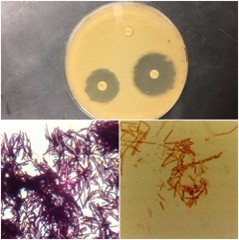
Mentor: Dr. Laurent Dejean
Particulate matter (PM) exposure, inflammatory response and reactive oxygen species (ROS).
Fresno is considered one of the most polluted cities in the United States. Previous studies have established a link between particulate matter (PM) exposure and adverse health effects. In our laboratory, we work with Rat alveolar macrophages (NR8383) and study the potential of PM2.5 to induce an inflammatory response catalyzed by a high production of reactive oxygen species (ROS). The chemical composition of PM2.5 is a complex mixture of solid and liquid particles that contains a high degree of variability associated to the time and location of a sample. Components of PM2.5 such as transition metals and quinones are believed to play a major role in PM2.5 cytotoxicity, due to their ability to trigger intracellular ROS production through process such as Fenton reaction or redox cycling. To further investigate PM2.5-associated ROS generation, our team utilized a cell-based fluorescence microplate assay. The fluorophore employed was dichloroflourescein-diacetate (DCFH-DA), which will measure the total intracellular ROS levels triggered by PM2.5 samples and model solutions. A flow cytometry-based assay will be employed to identify subcellular localizations of oxidative stress. This technique will allow for single cell analysis of multiple fluorophores, in which fluorescent dyes MitoSox and DCFH-DA could differentiate mitochondrial and cytosolic ROS. By distinguishing between the separate fluorescent signals, the experiments could provide information about the mechanism to which PM2.5 may contribute to pulmonary dysfunction; and the relative contributions of quinones and transition metals in these processes.
Mentor: Dr. Hwan Youn
Allosteric regulation of CRP (cAMP receptor protein) as a transcriptional activator
CRP (cAMP receptor protein) is a transcriptional activator which regulates hundreds of transcriptional units, it does so by responding to cellular levels of cAMP. CRP has two states active and inactive inside the E. coli cell. Upon binding to cAMP, CRP undergoes an allosteric transition, thereby allowing the protein to bind DNA strongly and specifically. The active conformation of CRP is heavily studied and well-known, but inactive conformation is poorly understood. The inactive structure may have interactions that allow its activity to remain low in the absence of the cAMP. My project aims to identify CRP residues particularly important in the inactive conformation. Putative residues have been selected based on their involvement in charge interactions in the inactive form of CRP but not in the active form. Using site-directed and random mutagenesis I will substitute residues responsible for the charged interactions. I predict that substitution of these residues in the inactive form will increase the activity of CRP in the absence of cAMP by destabilizing the inactive form. Results from these experiments will locate key structural components critical for the inactive CRP form and may reveal the reasons why they are important. Several proteins in this family function as virulence factors in human pathogens like Listeria monocytogenes and Pseudomonas aeruginosa. Once the critical components of regulation are understood, the knowledge can be applied to the homologs in the pathogen in order to develop small-molecule inhibitors of bacterial transcription.
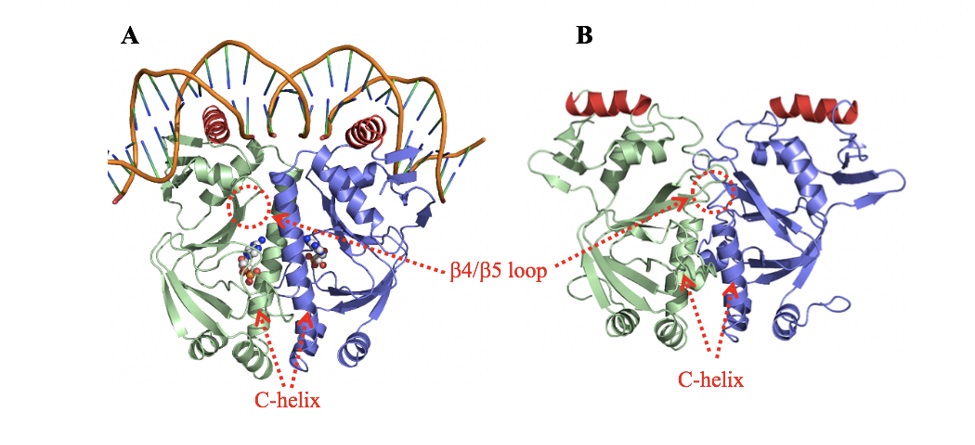
Mentor: Dr. Martin Shapiro
Effect of emotional states on risky economic decision-making.
For my thesis project, I am investigating the effect of emotional states on risky economic decision-making. There is some evidence from our lab that seeing negative images (e.g., a dead body) increases riskiness compared to seeing positive images (e.g., water skiing). In the present study, we are measuring individual emotional reactions and risk-taking behavior. Emotions are being assessed by physiological activity and self-report. Participants complete a gambling task where they solve short memory problems using images; they then have an opportunity to risk points based on perceived accuracy. While playing the game, we monitor three physiological responses, heart rate (ECG), skin conductance (EDA), and facial expression (EMG). We are also using subjective measures of emotion and stress before, during and after the experiment. We hypothesize that those most affected subjectively and physiologically by the images will show the most significant change in their risk-taking behavior.
Third UC Merced Cohort
Research Focus
Mentor: Dr. Alejandro Calderon-Urrea
Identification of the DNA Sequence Responsible for Chalcone Resistance in C. elegans Using EMS-Based Deep Sequencing Mapping.
The project will be focused on identifying the DNA sequence responsible for causing resistance to the organic chalcones 17, 25, and 30. These organic chalcones kill C. elegans at very low concentrations and therefore are excellent nematicidal prospects. This project will help us elucidate the molecular and biochemical mechanisms of action for these chalcones.
Mentor: Dr. Paul Price
How people respond to their implicit racial bias that is inconsistent with their explicit bias.
People exhibit a sample size bias when judging the average of groups. The larger the group, the greater the judged average—even when the actual average is held constant. Sample size bias has been demonstrated for a variety of stimuli and stimulus dimensions. For example, the judged average of a group of numbers increases as the number of numbers increases (Smith & Price, 2010). Similarly, the judged average size of a group of squares increases as the number of squares increases (Price et al., 2014). Recently, Halliday et al. (2016) found the judged average attractiveness of a group of people increases as the number of people in the group increases. In the previous research on attractiveness, however, the stimulus people were at least moderately attractive. But we do not know what will happen when the stimulus people are unattractive. For this reason, we are conducting a study to see whether sample affects judgments of the average attractiveness of groups of unattractive individuals. College student participants will judge the average attractiveness of groups of three, six, and nine people—including groups of men and groups of women—who are either very attractive, moderately attractive, or unattractive. For groups of very and moderately attractive individuals, we expect to see a sample size bias with larger groups being judged to be more attractive on average. For groups of unattractive individuals, larger groups may also be judged to be more attractive on average, which would be consistent with all our previous research on the sample size bias. However, larger groups of unattractive people may instead be judged to be less attractive on average. This result would have interesting implications for understanding why the sample size bias occurs. For example, it would imply that it does not involve a simple “translation” of larger samples to judgments that are higher on the response scale.
Mentor: Dr. Hwan Youn
Comparative analysis of CRP and Clp in DNA binding and transcriptional activation
The CRP/FNR superfamily of transcription factors typically function as transcriptional activators. CRP is a transcription factor, in which the ligand cAMP binds, inducing an a conformational shift of the protein. This change in structure allows for the binding of CRP to the specific DNA binding site. Clp is a CRP homolog, binding to the same DNA binding site.However, Clp does not require the binding of a ligand to assume an active conformation, instead, it sustains an active conformation alone. As to why this occurrence takes place is a current topic of research.
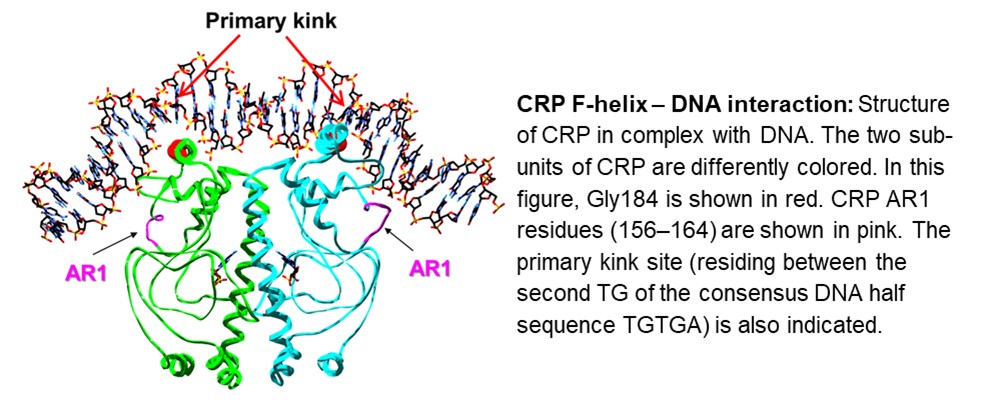
Mentor: Dr. Qiao-Hong Chen
Chemical modifications for anti-prostate cancer agents.
The American Cancer Society estimates over 161,000 new cases of prostate cancer and about 26,730 deaths from this disease will occur in 2017. There are successful treatments for early-stage prostate cancer, but not for advanced, metastatic castration-resistant prostate cancer. There is a huge difference in the incidence of prostate cancer between Western (120 per 100,000 in Northern America) and East countries (less than 10 per 100,000 in Asia). The significantly increased risk of prostate cancer in the first generation of Asian men relocating to the United States suggests a chemopreventive effect of Asian traditional food. Several dietary natural products have been demonstrated to have potential in treating prostate cancer. However, their moderate potency and poor bioavailability have limited their clinical use. My research aims to optimize two dietary natural products, Fisetin and Luteolin, through chemical modifications as anti-prostate cancer agents. The specific aim is to define the in vitro potency of the nitrogen-containing derivatives of fisetin and luteolin.
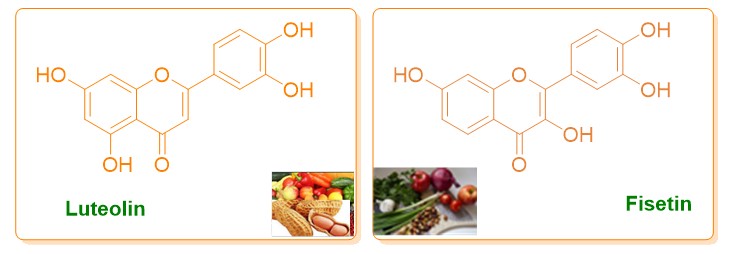
Second UC Merced Cohort
Research Focus
Mentor: Dr. Laurent Dejean
A Method to Assess Reactive Oxygen Species Production in Alveolar Macrophages Exposed to Particulate Matter
There is a well-established link between atmospheric particulate matter with a diameter smaller than 2.5 nm (PM2.5) and adverse health effects. PM2.5 exposure has been associated with reactive oxygen species (ROS)-linked oxidative stress. For the investigation of PM-associated ROS generation, the dichlorofluorescein-diacetate (DCFH-DA) fluorescent probe is applied in a 96-well microplate format to measure relative ROS levels induced in alveolar macrophages. The objective of this study is to establish a method for the detection of ROS production induced in alveolar macrophages in response to PM2.5 samples collected in the areas of Fresno and Claremont, California.
The macrophage-based ROS detection assay standardized in this study is a part of an integrated approach, which involves the chemical characterization of a unique set of PM2.5 samples and the analysis of these PM2.5 samples in both cell-based and cell-free models. The goal of this project is to analyze a collection of 15 PM2.5 samples with the bioassay and to compare the ROS measurements obtained to the chemical composition of the samples.
Mentor: Dr. Laurent Dejean, Chemistry
The Warburg Effect
There is an imbalance of cell death observed in cancer such as in lymphomas. In other words, there is variation in the anti-apoptotic and pro-apoptotic expression levels. The B-cell lymphoma 2 (Bcl-2) family proteins that regulate cell death, it can have a pro-apoptotic or an anti-apoptotic effect. Current studies show that Bcl-2 is overexpressed in cancer patients. Patients that have high levels of Bcl-2 tend to have a resistance to chemotherapy. Monitoring the expression levels of Bcl-2 in cancer patients is important to provide the most optimal treatment for the patient. The Bcl-2 family protein is localized to the outer membrane of mitochondria. They can be identified by their four domains: BH1, BH2, BH3, and BH4. Members of the Bcl-2 that have an anti-apoptotic response include Bcl-2, Bcl-xL, and Bcl-w. Cancer cells need the energy to survive, their metabolism can be explained by the Warburg effect.
The Warburg effect shows that there is an increase in anaerobic glycolysis vs mitochondrial oxidative phosphorylation. In the 1920s, Otto Warburg observed that cancer cells tend to uptake glucose at high rates compared to normal cells. The consumed glucose is then secreted as lactate instead of being oxidized completely. Tracking the metabolic pathway using the stable isotope Carbon-13 (C-13) will provide a better understanding of cell metabolism. The in vivo labeling of cancer cells (Bcl-2, Bcl-xL) with C-13 glucose will help keep track of the glucose consumption and lactate production. Gas Chromatography-Mass Spectrometry will be used to study changes in the cell metabolic pathway.
Mentor: Dr. Ulrike Muller, Biology
On Biomechanics of Suction Feeding
My research project is about the suction feeding of small organisms. I will build a robotic model of a bladderwort which will aid in studying the suction feeding off that organism. This model will allow us to see the feeding event at a more reasonable time frame, and also how small the gap can get and still have a successful feeding event. To better understand the actual feeding event, I have done high-speed filming of a few feeding events of Utricularia praelonga. Plants in the genus Utricularia are carnivorous plants.
Mentor: Dr. David Lent, Biology
On Short-range and Long-range Visual Navigation of Insects
Wood ants (Formica rufa L.) are minuscule creatures, yet navigate in a very large world. They are among the many ant species that rely chiefly on their sense of vision for navigation in their environment. Studies have shown that wood ants use the skyline panorama to obtain long-range navigation cues for both returning to a previously-identified location, such as a food source, and for returning to their nest upon completion of the trip. For short-range navigation, the chief visual cues to the ant come from images that present a relatively unstable image on its retina. These objects generally are closer to the ant. As such, as the ant travels past such objects, their orientation changes with respect to the ant’s position.
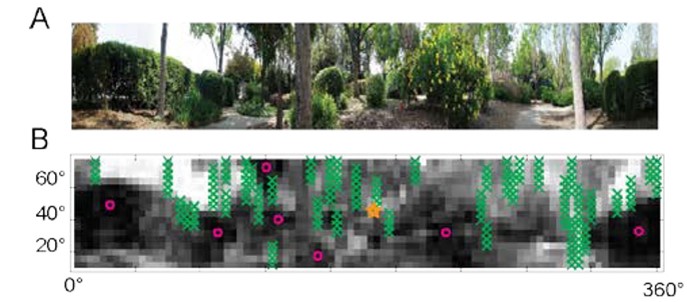
First UC Merced Cohort
Research Focus
Mentor: Dr. Jason Bush, Biology
Neural Stem Cells and Irradiation
Cranial radiotherapy is often used to treat brain tumors; however, cognitive decline
has been observed as a consequence of this therapy and there are currently no preventative
measures that can be taken to avoid this side effect. Much attention has been centered
on functions that are dependent on the hippocampus since multipotent stem cells are
concentrated here (Gage 2000). Recent studies show a reduction in the number of neurogenic
cells (Monje ML. et al. 2007) and mature neuronal loss in the dentate gyrus portion
of the hippocampus (Raber J. et al. 2004; Fan & Weinstein 2007). It has been demonstrated
that MNPs that received varying levels of irradiation exert acute and chronic levels
of oxidative stress (Limoli CL et al. 2004;2004;2006;2006;2007; Giedzinski E. et al.
2005). I propose to differentiate neural stem cells (NSCs) into neurons, astrocytes,
and oligodendrocytes. I will then irradiate the 3 differentiated cell types in addition
to the undifferentiated cells at varying levels of irradiation. I will then proceed
to evaluate the damage with NMR and various fluorescence microscopy assays.
The purpose of my project is to address a current gap in scientific knowledge pertaining
to how multipotent neural precursor (MNPs) cells are affected after receiving varying
levels of irradiation. I believe that the use of mitochondrial protectants might help
reduce the damage to both NSCs and differentiated cells after irradiation. The objectives
are (a) Grow and differentiate NSCs into neurons, oligodendrocytes and astrocytes,
(b) Irradiate the 4 cell types without neuroprotectants and evaluate the damage with
a variety of fluorescence microscopy assays and NMR and (c) Administer neuroprotectants
to the 4 cell types and irradiate them and evaluate the damage in the same way as
objective 2.
Mentor: Dr. Mamta Rqwat
On the Biofilm Formation
We are investigating how DTT a reductant and Diamide an oxidation affects biofilm formation on three species of interest, Mycobacterium smegmatis, Candida albicans and Staphylococcus aureus. This study will allow for further understanding of different biofilms and the effects of environmental stresses and provide potential drug targets.

Mentor: Dr. Joy Goto
On the Mechanism of BMAA and its Carbomate Adducts
The environmental neurotoxin beta-Methylamino-L-alanine (BMAA) is considered an etiologic factor in the development of amyotrophic lateral sclerosis (ALS) and ALS-parkinsonism-dementia complex (ALS/PD). The structural moiety of the non-protein BMAA alone is not able to decisively produce neurotoxicity within the neuronal environment. However, in the presence of bicarbonate (HCO3) BMAA undergoes structural alterations to give two different compounds known as the α-carbamate adduct and the β -carbamate adduct. Of the two adducts formed, the β-carbamate adduct contains the greatest structural similarity to the primary excitatory neurotransmitter, glutamate. Both compounds are elongated chains with an acidic carboxyl group at the opposite end. Based on the similarities of both structures and the ability of the glutamate to bind to the ionotropic receptors (iGluRs) it is highly likely that BMAA and its adducts are also able to affect the iGluR as either partial, full, or biased agonist. Considering the onset of ALS/PD does not occur acutely, but rather, over an extended period, the mechanism by which BMAA exhibits its excitotoxicity effects must be through continual neuronal stress in the neuronal milieu. The lack of acute neurotoxicity suggests the dynamic equilibria between BMAA and its respective adducts are variable during periods of metabolic and neuronal stress. Identification of the primary adduct formed, as well as, how it is affected by various conditions such as pH, metals, and regulatory compounds are important in order to identify a possible mode of action for BMAA in the neuronal environment.

Mentor: Dr. Jai-pil Choi
Colorimetric Detection of Alkali and Heavy Metals by Crown Ether Functionalized Au25 Clusters
Gold nanoparticles have been well studied over the past century garnering attention within many disciplines finding wide use in applications such as drug delivery, catalysis, and as chemicals sensors. Gold nanoparticles <3 nm like Au25 is a whole new class of nanoparticles which possess rich optical and electrical properties different from their larger cousins. Since their discovery been under constant investigation. Our work focuses on studying fundamental electronic and optical properties of Au25 functionalized with crown ethers and doped with heavy metals. Crown ethers are well known to chelate cations in solution potentially serving as interactive extensions of Au25. Recent findings have led to an unexpected reaction between Au25 and Hg2+. When mercury is introduced to a solution of Au25, a change in its electronic features are observed, which might suggest alterations within the gold core. Our focus is to study the electrical, optical, and physical properties of crown ether functionalized Au25 and AuxHgy clusters by cyclic voltammetry, UV-Vis spectroscopy, and fluorescence.
